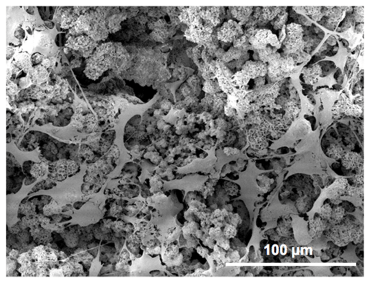Please support the launch of our dental implant cleaning product by filling a short survey about your prior implant cleaning experience! Your input is very valuable and can help us improve your dental implant practice.
Click Here for the Survey Link.
Scientific Studies
1. Chimene, D., Alge, D.L., & Gaharwar, A. K. (2015). Two-dimensional Nanomaterials for Biomedical Applications: Emerging Trends and Future Prospects. Advanced Materials, 27, 7261-7284. doi: 10.1002/adma.201502422. Click here for PDF
2D nanomaterials encompass a wide variety of materials under their umbrella,
each with their own physical, mechanical, chemical, and optical properties. This
diversity in their properties make them suitable for varied applications in the
healthcare space ranging from drug delivery systems to tissue regeneration.

2. Tamimi, F. (2016). Two-dimensional Megnesium Phosphate Nanosheets Form Highly Thixotrophic Gels that Up-Regulate Bone Formation. Nano Letters, 16,
4779-4787. doi:10.1021/acs.nanolett.6b00636. Click here for PDF Magnesium: the fourth most commonly found element in the human body, makes up an integral part of bones and teeth. Magnesium compounds such as magnesium phosphates play an important role in mineral metabolism to promote hydroxyapatite crystal formation and bone calcification. Additionally, the rising interest in the use of 2D nanomaterials over the last few years can be attributed to their unique range of properties. This article describes a novel 2D sodium-magnesium-phosphate system that brings forth the biocompatibility and regenerative properties of the complex in a hydrogel form for biomedical applications. The complex acts as a scaffold for the proliferation of osteoblasts that lead to the formation of new bone tissue and thus heal the bony defects caused by infection.



3. Al-Hashedi, A.A. (2018). Advanced inorganic nanocomposite for
decontaminating titanium dental implants. Wiley Online Library, 1-12. doi: 10.1002/jbm.b.34170. Click here for PDF
Compared to the tooth enamel, the titanium implants are more prone to the abrasive effects of toothpastes. The consequent changes in the physiochemical properties of the implant structures decrease their longevity.
The recent discovery of “clay-like” material composed of 2D magnesium phosphate nanocrystals (NMP) provides a promising alternative to cleaning of these implants with additional bone regeneration and healing properties.
As per Fluorescence Microscopy studies (depicted below), there has been a reduction in the bacterial load on the implant surface from 44·103 ± 27·103/µm2 to 2·103 ± 1·102/µm2 .


4. Al-Hashedi, A.A. (2016). Decontamination of titanium implants using physical
methods. Clinical Oral Implants Research, 1-9. doi: 10.1111/clr.12914. Click here for PDF
5. Unpublished Data


Call Us
438-931-2178
Reach Us
1250 Rue Guy Suit #600
Montreal, Quebec, H3H 2L3